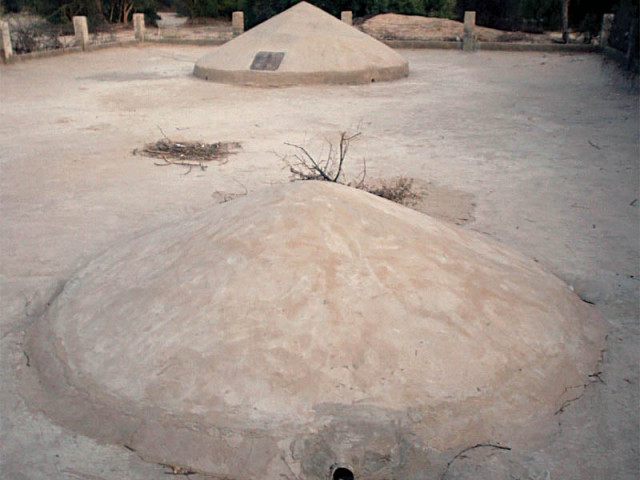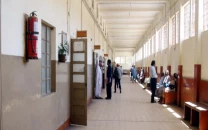Natural disaster: Thar declared drought-hit as time for rains runs out
Govt to arrange for free or subsidised wheat, food and fodder for the 1.5 million people.

Natural disaster: Thar declared drought-hit as time for rains runs out
The government of Sindh has declared Tharparkar a drought-hit district, thereby acting swiftly on the recommendation of the district administration.
Sindh Information Minister Sharjeel Memon, who also belongs to Thar, announced this on Sunday. The district administration had proposed declaring 161 out of the 166 dehs, 95% of Thar, as drought-hit.
The government is now expected to provide subsidised or free wheat and other food as well as fodder for the livestock. The agricultural loans people have taken from government banks will also be waived in addition to agricultural taxes.
The desert district, which is spread over 19,639 square kilometres, is not connected with an irrigation system. It is solely dependent on monsoon rainfall for farming and its sprawling pastures which feed its livestock - the two major sources of livelihood for the people. The rains also help the growth of shrubbery and herbs.
“For us a normal season is when we receive two to three rainfalls with an interval of three to four weeks during the monsoon,” says Krishan Sharma, an agricultural expert. According to him, an amount of 200 to 300 millimetres of rain is required to turn the area arable and that too by the end of July at the latest. The meteorological department had predicted heavy rains which might lead to flooding in June and July. But its forecasts morphed this month with a drought warning being issued a few days ago.
Bajra (millet), guar (cluster bean), moath (kidney beans) and moong (lentil) are the major crops in the area. Ramesh Meghwadh, a field officer of the Sindh Agriculture Extension, says the ideal time for the growth of millet is the month of July when the plant needs the water most. However, spinach and lentils can be grown in August if it rains. He recalled that the farmers earned up to Rs40,000 per 100 kilograms for the sale of cluster bean last year and the per acre yield was around 10 to 12 maunds. Up to 60,000 acres was farmed for cluster bean out of the total estimated cropped land of 160,000 acres.
The district has an estimated population of 1.5 million people and the last census in 1997 put that figure at over 900,000. The drought forces up to 30% of the population to migrate to the arable areas where the people can offer their labour and arrange fodder for their livestock. Once gone, they will not return before the next monsoon.
If needed, Thar has to be declared drought-hit by the middle of August. The rule was made by the British government and after the independence of Pakistan it stayed in force. Sindh Information Minister Sharjeel Inam Memon said that it was a hard and fast rule that if it doesn’t rain by August 15, they announce an emergency. “It has been a practice because even if it rains after this date, there will be no crops,” he explained.
The region has been continuously declared drought-hit in 1968, 1978, 1985, 1986, 1987, 1995, 1996, 1999, 2001, 2004, 2005 and also in 2007.
Zaffar Iqbal Junejo of Thardeep Rural Development Programme clarified that it did rain in Nagarparkar and Islamkot, etc, but the problem was that no monsoon rain reached the region.
He added that as the people are not dependent on agriculture but on livestock the government’s announcement of an agricultural tax exemption means nothing to them. “They will only help with wheat and aid for the livestock,” he said.
He was of the opinion that it was not enough to just make an announcement. “We do not need intentions but an excellent structure for administrative support,” he said. The government’s aid will take a lot of time to reach with the protocols of policy making and files, etc, But the recognition that a region is calamity-hit is the step that mobilises international support, he said.
With additional input from
Samia malik
Published in The Express Tribune, August 20th, 2012.



















COMMENTS
Comments are moderated and generally will be posted if they are on-topic and not abusive.
For more information, please see our Comments FAQ